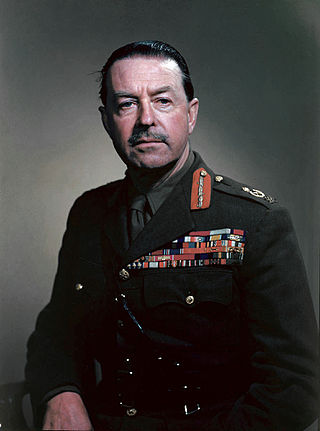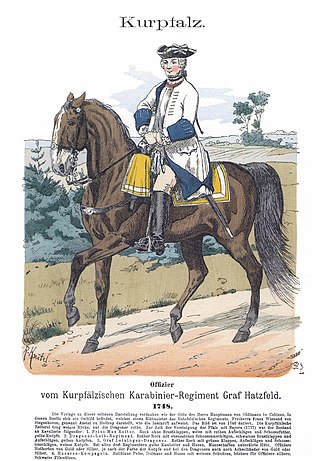A general officer is an officer of high rank in the armies, and in some nations' air forces, space forces, and marines or naval infantry.

Field marshal is the most senior military rank, ordinarily senior to the general officer ranks. Usually, it is the highest rank in an army, and as such, few persons are appointed to it. It is considered as a five-star rank (OF-10) in modern-day armed forces in many countries. Promotion to the rank of field marshal in many countries historically required extraordinary military achievement by a general. However, the rank has also been used as a divisional command rank and also as a brigade command rank. Examples of the different uses of the rank include Afghanistan, Austria-Hungary, Pakistan, Prussia/Germany, India and Sri Lanka for an extraordinary achievement; Spain and Mexico for a divisional command ; and France, Portugal and Brazil for a brigade command.
Generalfeldmarschall was a rank in the armies of several German states and the Holy Roman Empire (Reichsgeneralfeldmarschall); in the Habsburg monarchy, the Austrian Empire and Austria-Hungary, the rank Feldmarschall was used. The rank was the equivalent to Großadmiral in the Kaiserliche Marine and Kriegsmarine, a five-star rank, comparable to OF-10 in today's NATO naval forces.

Eduard Freiherr von Böhm-Ermolli was an Austrian general during World War I who rose to the rank of field marshal in the Austro-Hungarian Army. He was the head of the Second Army and fought mainly on the front of Galicia during the entire conflict. On 30 October 1940, Böhm-Ermolli was made a German Generalfeldmarschall.

Svetozar Boroević von Bojna was an Austro-Hungarian field marshal of Croatian Serb descent who was described as one of the finest defensive strategists of the First World War. He commanded Austro-Hungarian forces in the Isonzo front, for which he was nicknamed the "Lion of Isonzo".
Gefreiter is a German, Swiss and Austrian military rank that has existed since the 16th century. It is usually the second rank or grade to which an enlisted soldier, airman or sailor could be promoted.

Rittmaster is or was a military rank of a commissioned cavalry officer in the armies of Germany, Austria-Hungary, Norway, Sweden, Denmark, and some other countries. A Rittmeister is typically in charge of a squadron, and is the equivalent of a Hauptmann rank.
General is the highest rank of the German Army and German Air Force. As a four-star rank it is the equivalent to the rank of admiral in the German Navy.

Viktor Julius Ignaz Ferdinand Graf Dankl von Kraśnik was a highly decorated Austro-Hungarian officer who reached the pinnacle of his service during World War I with promotion to the rare rank of Colonel General (Generaloberst). His successful career met an abrupt end in 1916 due to both his performance on the Italian front and health issues. After the war, he would be a vocal apologist for both his country's war record and the dethroned Habsburg monarchy.

The Military Order of Maria Theresa was the highest military honour of the Habsburg monarchy, Austrian Empire and Austro-Hungarian Empire.

A five-star rank is the highest military rank in many countries. The rank is that of the most senior operational military commanders, and within NATO's standard rank scale it is designated by the code OF-10. Not all armed forces have such a rank, and in those that do the actual insignia of the five-star ranks may not contain five stars. For example: the insignia for the French OF-10 rank maréchal de France contains seven stars; the insignia for the Portuguese marechal contains four gold stars. The stars used on the various Commonwealth of Nations rank insignias are sometimes colloquially referred to as pips, but in fact either are stars of the orders of the Garter, Thistle or Bath or are Eversleigh stars, depending on the wearer's original regiment or corps, and are used in combination with other heraldic items, such as batons, crowns, swords or maple leaves.

Gorget patches are an insignia in the form of paired patches of cloth or metal on the collar of a uniform (gorget), used in the military and civil service in some countries. Collar tabs sign the military rank, the rank of civil service, the military unit, the office (department) or the branch of the armed forces and the arm of service.

The Military Merit Medal was a military decoration of the Empire of Austria-Hungary. It was founded by Emperor Franz Joseph I on March 12, 1890. The Military Merit Medal is often referred to as the "Signum Laudis" after the inscription on the reverse of the medal.
General of the Artillery was a historical military rank in some German and Austro-Hungarian armies, specifically in artillery. It was commonly used in the 16th and 17th centuries, and survived until the beginning of the 20th century in some European countries. In the army of the Habsburg Empire, the rank of Feldzeugmeister was equivalent with lieutenant general.

Field marshal (FM) has been the highest rank in the British Army since 1736. A five-star rank with NATO code OF-10, it is equivalent to an Admiral of the Fleet in the Royal Navy or a Marshal of the Royal Air Force in the Royal Air Force (RAF). A Field Marshal's insignia consists of two crossed batons surrounded by yellow leaves below the Tudor Crown. Like Marshals of the Royal Air Force and Admirals of the Fleet, Field Marshals traditionally remain officers for life, though on half-pay when not in an appointment or retired. The rank has been used sporadically throughout its history, and was vacant during parts of the 18th and 19th centuries. After the Second World War, it became standard practice to appoint the Chief of the Imperial General Staff to the rank on his last day in the post. Army officers occupying the post of Chief of the Defence Staff, the professional head of all the British Armed Forces, were usually promoted to the rank upon their appointment.
Lieutenant field marshal, also frequently historically field marshal lieutenant, was a senior army rank in certain European armies of the 17th to 20th centuries. It emerged as the rank of field marshal came to be used for the highest army commander in the 17th century. In German-speaking countries the commander-in-chief usually appointed an "under marshal" or "lieutenant field marshal" to support and represent the field marshal. Amongst his functions as the personal deputy to the field marshal, were the supervision of supply depots and routes, and inspection of the guards.
Colonel general is a military rank used in some armies. The rank originates from the Old European System and it is particularly associated with Germany, where historically general officer ranks were one grade lower than in the Commonwealth and the United States, and Generaloberst was a rank above full General, but below Generalfeldmarschall. The rank of colonel general also exists in the armed forces organized along the lines of the Soviet model, where it is comparable to that of a lieutenant general.
This article deals with the rank insignia of the Austro-Hungarian Army, as worn by the Austro-Hungarian Army after the reorganisation in 1867 until 1918.
Offiziersstellvertreter, short OStv, is a rank of the higher non-commissioned officers rank group in the Austrian Bundesheer and Imperial German Army.











